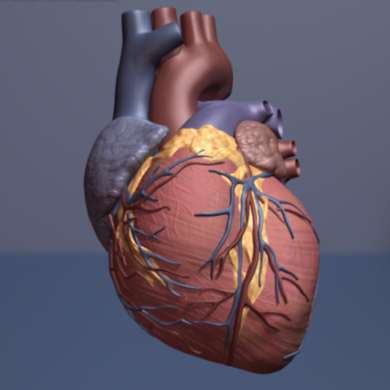Study shows minimally invasive valve replacements hold up well after five years

A minimally invasive procedure used to replace heart valves without open heart surgery appears to provide a durable remedy for people with a life-threatening form of heart disease in which the aortic valve opening narrows, diminishing blood flow.
The procedure, called trans-catheter aortic valve replacement, or TAVR, has been safely used in older patients who are not good candidates for open heart surgery. But strong research establishing its durability over five to 10 years has been lacking. This has created questions about whether it should be used in younger and healthier people.
Now a study, published in JAMA Cardiology and led by a member of the Duke Clinical Research Institute, provides some answers. Using data and follow-up from the first and largest studies of TAVR safety, the research team found that the biologic valves used in a TAVR procedure, as well as those used in open heart surgery, continue to perform well up to five years after implantation.
"I think these findings are incredibly reassuring at least out to five years," said lead author Pamela Douglas, M.D., the Ursula Geller Professor for Research in Cardiovascular Diseases at Duke University School of medicine and director of the DCRI imaging program. "The valve is quite durable and safe."
Douglas and colleagues analyzed data from more than 2,700 patients who had been part of a large trial called PARTNER, which established the safety of TAVR. The study patients received either a minimally invasive TAVR procedure - which uses a catheter that is routed through a blood vessel in the leg or chest to access the heart—or an open-heart surgery to replace the valve.
All of the study patients received biological valves, developed from animal or donated human tissue. Biological valves are increasingly favored over mechanical valves, which must be surgically implanted and require long-term use of anti-coagulation drugs to protect against blood clots.
In their analysis, the study authors also included echocardiograms of about 475 patients five years after either their minimally invasive or surgical valve replacement. The average age of patients in the study group was 84.5 years, and many had additional serious health risks.
Among the 2,404 TAVR patients in the study, 34 percent survived five years. Similarly, 37 percent of the 313 patients whose valves were replaced in an open surgery also survived to five years.
Twenty TAVR patients (0.8 percent) required a second valve procedure, and only five of the revisions arose from structural deteriorations of the valve.
The researchers found evidence that 3.7 percent of the TAVR patients developed a condition in which the valve allowed blood to flow back into the heart, and this problem increased over time.
"This was seen in only a handful of patients, but it's certainly something of concern and warrants further study," Douglas said. "Overall, however, the findings from this carefully designed study demonstrate that there is little evidence of valve failure or deterioration for either TAVR or surgery using biological valves."
She said the study provides a first step in understanding the long-term benefits of minimally invasive valve replacement, and suggests additional studies could be safely undertaken.
















